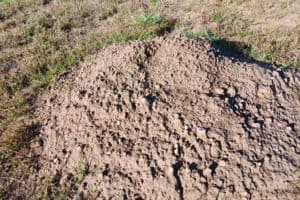Last summer, we surrendered to the grasshoppers.A lot of people took up gardening over the pandemic summer of 2020. We went the opposite direction; and, for the first time in years, had no garden other than a flower garden to help feed our bees. We had already scaled back the previous year, but this time there were no tomatoes, no kale, no squash, no corn, no anything. We were tired of the late-season freezes, the damaging hailstorms and, mostly, the ravenous grasshoppers.A Colorado State University Extension fact sheet acknowledges the challenges of gardening in Colorado, including “rapid and extreme weather changes and frequently poor soil conditions.” Still, the fact sheet assures, “Gardeners who are patient, know how to select plants that will do well, and manipulate the soil and microclimate will be amply rewarded.îYeah, well, our patience had run out.††But never say never. We’re going to try gardening again this summer, with the help of a 10-foot-by-12-foot greenhouse that my wife ordered online ñ- and that sat unopened, buried in a snowstorm, for the first few days after it arrived, thanks to that wacky “springtime in the Rockies.” It’s from Shelterlogic, which proclaims: “Heavy duty greenhouse for the experienced grower delivers quality construction and quick and easy assembly.” Ignoring the “experienced grower” part, we’re hoping it will provide a controlled environment that keeps the grasshoppers out.Maybe we should surround it with a moat of molasses. When I was bemoaning the grasshopper problem a couple of summers ago, Falcon resident Connie Hamblin, aka “Granny in the Garden,î recommended filling containers with a mix of molasses and water and placing them around the garden; the idea is that the grasshoppers, attracted by the sugar in the molasses, will jump in but won’t be able to get out.”They love molasses,” she told me then.Well, maybe, but our grasshopper “traps” never drew any of the nuisances. But if it’s the sugar they crave, I idly wondered: If I grew sugar cane as a sacrificial crop in a separate area, would that attract them? The notion sent me to the internet, where Mother Earth News assured me that “sugar cane is easy to grow, easy to harvest and easy to process into something that’s delicious and very gift-worthy for the holidays.” And grasshoppers apparently are a fan: “The American grasshopper, Schistocerca americana, is a birdwing grasshopper that occasionally causes serious injury to sugar cane,” the University of Florida Institute of Agriculture and Science warns. “This grasshopper eats leaf blades down to the midrib in jagged, irregular patterns, removing valuable photosynthetic tissue from the plant.”At any rate, despite Mother Earth News’ assurances, sugar cane is not suitable for Colorado’s climate. That was the answer to someone on the online Ask Extension site who asked whether sugar cane can be grown in Colorado. Their question was also inspired by Mother Earth News; the Ask Extension expert said some Gulf Coast states and Hawaii are your best bet for growing sugar cane, though you might try growing it “recreationally” in Phoenix.Back here in Colorado, there are dozens of species of grasshoppers, according to another CSU Extension fact sheet, “But 90 percent of damage to plants is caused by grasshoppers in the genus Melanoplus. Females of one species in the genus can lay up to 400 eggs in a single season, depending on the weather.”As for their appetites, “A grasshopper will eat its own weight in green food in about 16 hours,” the fact sheet states. “In fact, seven grasshoppers per square yard over 10 acres will eat the same ration as one cow.”There are several insecticides that control grasshoppers, the fact sheet notes. “Insecticides including the active ingredients Carbaryl, sold as Sevin, and Malathion can be used as a spray.” The trouble is that those ingredients are highly toxic for bees ñ- and our honeybees have enough challenges already.I don’t know what bees think of garlic, but apparently grasshoppers aren’t a fan. Epicgardening.com, in touting some “organic grasshopper control” measures, suggests garlic spray: “They really donít like the smell or taste of garlic, so coating your plants in garlic spray is a great way to prevent them from a grasshopperís hungry appetite.” The site also suggests hot pepper wax spray ñ- another option that while supposedly “disgusting” to the grasshoppers may not be appealing to the bees either.I decided to turn to Ahavah Farm in Peyton for guidance. I knew Yosef and Havah Camire had bounced back from multiple disasters, rebuilding the farm after a devastating hailstorm several summers ago and then again after the March 2019 bomb cyclone. But how did they handle the more persistent threat of grasshoppers?”We have a wood fence around the garden,” Havah Camire replied in response to my email.† “It helps some.” And screens in the windows of their hoop houses help keep those areas clear of grasshoppers, which is a positive sign for our greenhouse.”Also Nolo Bait at the beginning of the season and continuously does help a lot,” she added.At nolobait.com, I found out that Nolo Bait is “an EPA registered biological control for grasshoppers.” And apparently it is “a bee-friendly solution.” So, we’ll be adding that to our arsenal against the pest.Grasshoppers, you’ve been warned!Besides grasshoppers†Ö†Colorado has other pestsSource:†https://cohomeblog.recolorado.com/7-common-garden-pests-in-colorado-and-how-to-manage-them/1. AphidsThese tiny sap-sucking insects come in all different colors, including light green, white, black, brown, gray, and yellow. Their soft, pear-shaped bodies can appear waxy or woolly. With their long antennae, these†creatures would be adorable ó if they werenít so destructive. Aphids multiply quickly, and when large clusters of them inject their toxic saliva into plants, youíll see leaves curling or turning yellow. You also leave a†sticky ìhoneydewî substance on your plants, which can attract other insects, such as ants.How to get rid of them
- First, try wiping off the affected leaves. If you have an infestation, try spraying the leaves with a mixture of water and dish soap. You may need to re-treat the leaves every few days for a couple of weeks.
- Lady beetles (ladybugs) love to eat aphids, so buy a colony, either online or at your local nursery, and release them into your garden.
- Plant some catnip near your affected plants, as the herb repels aphids. Keep in mind. You may be overrun with neighborhood cats.
- Spray a mixture of dishwashing liquid and water early in the morning or late in the day. A good squirt of soap into a gallon of water is the right ratio.
- Use a handheld vacuum every few days to remove them from your plants.
- Mature plants have a better chance of survival. Plant tomatoes, peppers, and eggplants in early spring. This allows the crop to mature before psyllids attack them in the heat of summer.
- Remove old plantings from the garden, and compost or place them in the trash to prevent the next generation of psyllids from hatching.
- Sprays containing neem oil can help control a variety of garden pests, including tomato psyllids.
- Adult flea beetles will attack the tallest, earliest crops available. Plant a sacrificial crop, such as radish, before you plant your main crop. Once beetles start feeding, spray with a pesticide labeled for treating flea†beetles.
- Use screening to protect the seedlings, but remove barriers before the flowers come up so that pollinators can reach the plants.





